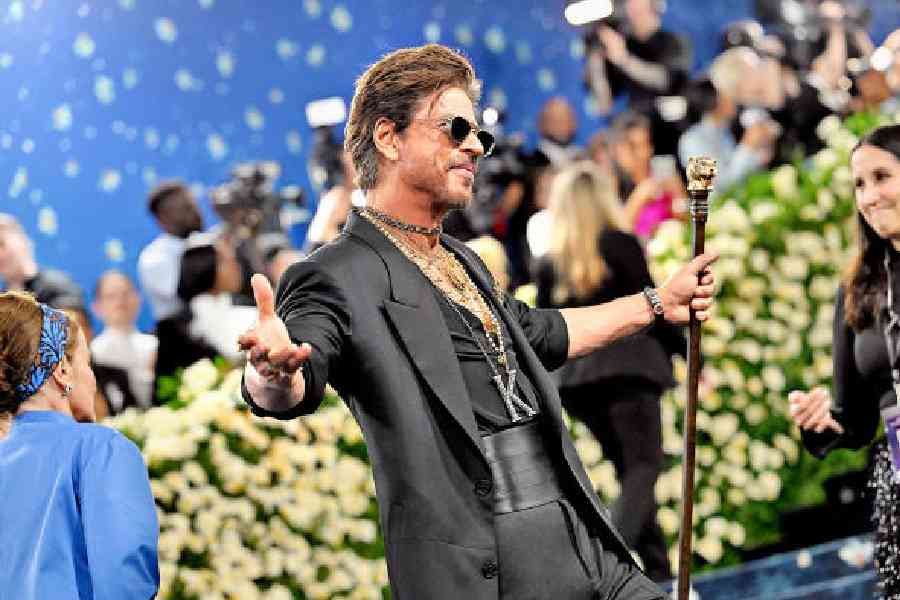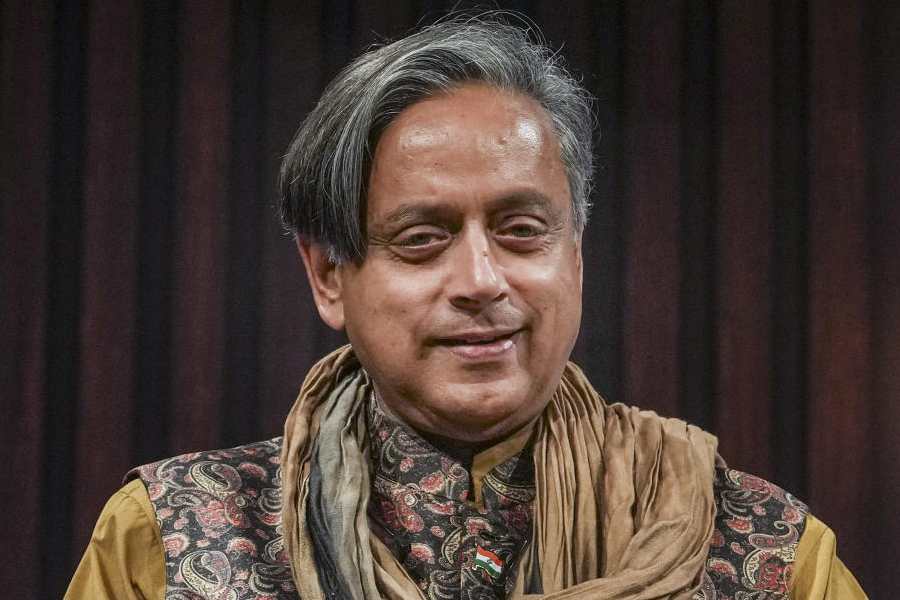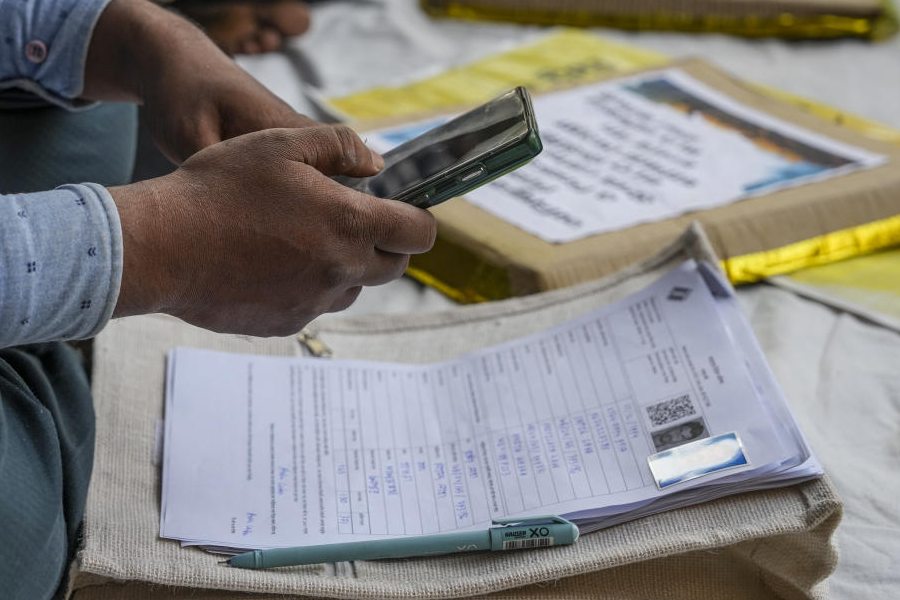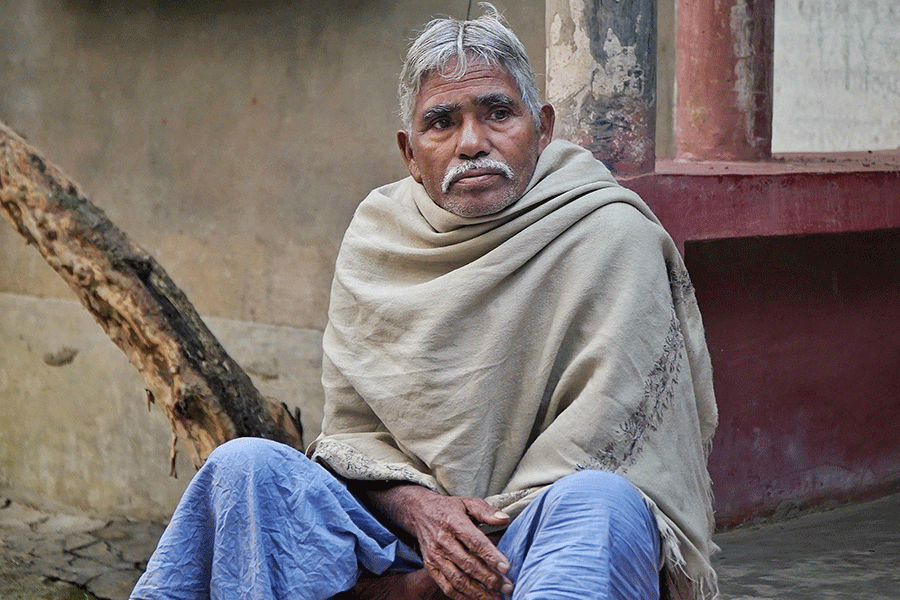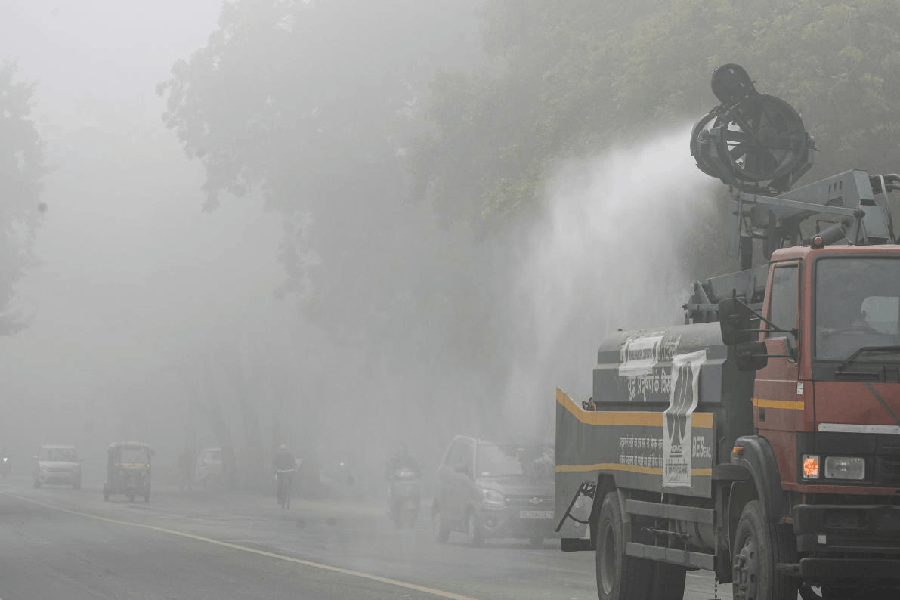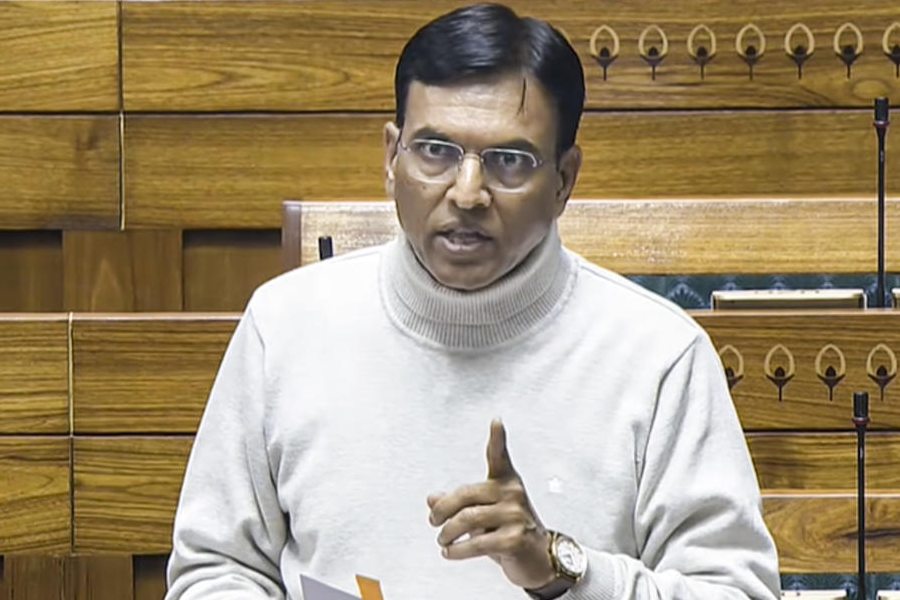I was walking through Gariahat the other day when a shopkeeper leaned out from his stall and called, “Didi,Kolhapuri chappal eshechhe! Prada’r na, kintu du bochhor cholbe; ₹250 only!”
He grinned, waving a pair of humble leather sandals at me like they were heirlooms. I smiled back. Because of course — it’s 2025, and the Kolhapuri chappal has just been rediscovered by Prada, reborn on the Milan runway like a messiah in matte leather, and renamed something minimalist like a “slip-on”.
It’s funny, the things we lose to distance and then find in someone else’s spotlight. Yoga had to be translated into branded mindfulness. Namaste became a greeting for meditation classes. Chai turned into “chai tea” (a phrase that still rings like “tea tea”), turmeric became a latte, henna tattoos became a thing and now, dupattas are having their “coquette-core” moment in the West as the “Scandinavian scarf”. The world took our homegrown rituals — spiritual, culinary, emotional — and blended them into wellness smoothies with Sanskrit hashtags.
But what’s different now is this: the gaze is shifting. No longer is India just the source. No longer the anonymous artisan behind the beaded curtain, or the quiet footnote in someone else’s fashion thesis. Now, India is the storyteller. The narrator. The centre of the frame. Not just a soft whisper behind the seams, but the voice that sets the rhythm, the vision that leads the moodboard, the runway that others now walk toward. This isn’t inspiration borrowed — it’s recognition earned, and long overdue.
Because this time, the Kolhapuri didn’t just travel — it arrived.
INDIANS TAKING THE GLOBAL STAGE
The MET Gala Said Namaste
First came the 2025 MET Gala. Shah Rukh Khan made his debut looking like royalty (because he is) in custom Sabyasachi, Manish Malhotra made his debut, and so did Kiara Advani and Diljit Dosanjh. With his cane, cummerbund and dazzling jewels featuring a ‘K’ necklace that stood out, Shah Rukh said, “I told Sabya I only wear black and white, and tonight’s look is because of that. What he’s designed for me is what I’m most comfortable in. That’s how I think it should be.” Sabyasachi made a glorious return with a custom cape that was half-museum piece, half-magic trick. The theme for this year’s MET Gala exhibition was ‘Superfine: Tailoring Black Style’ and the dress code was ‘Tailored For You’.
In an official note released by Sabyasachi’s team, the designer said, “His (Shah Rukh’s) look critiques the systems that once excluded figures like Jamsetji Tata, the industrialist whose response to being denied entry to a Whites-only hotel in colonial Bombay was to build the Taj Mahal Palace — a lasting monument to dignity and excellence.” On the blue carpet, he said, “My interpretation of the Black Dandy is demonstrating Shah Rukh Khan’s super stardom on a global stage. Dressed in classic menswear with the uniquely Indian, maximalist flourish of Sabyasachi. Shah Rukh Khan is a magician, superstar, and icon. Period.” This undoubtedly marked the biggest collective debut for Indian fashion at the Gala.
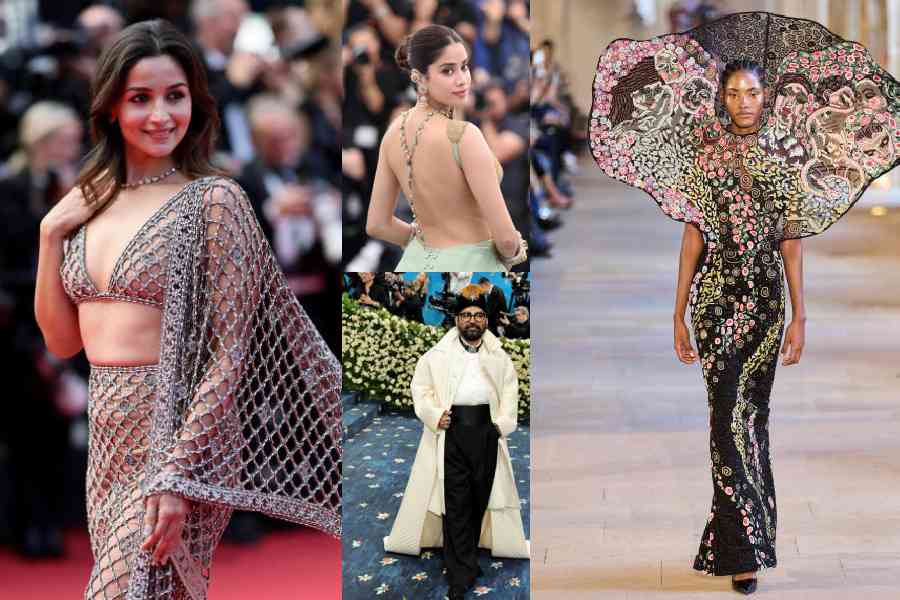
Eye-catching gala outfits
And yet, the official partners of the Gala only spoke to Shah Rukh and Sabya. No chat with Kiara. Not a whisper about Manish, Diljit, or Kiara. And just when you thought it couldn’t get worse, they referred to the revered designer as “Wasabi”. Yes, Wasabi! Somewhere in Bengal, a palm hit a forehead. Several global journalists later went viral for asking SRK his name. Nonetheless, a massive moment for India at the global event.
Cannes Couture & The Three-piece Set Formerly Known As Sari
Janhvi Kapoor and Ishaan Khatter flew the desi flag at Cannes, bringing actual young Bollywood energy to the Croisette. But it was Alia Bhatt who really stirred the pot. She wore a Gucci sari embellished with dazzling Swarovski crystals. Except… it wasn’t called a sari. Gucci described it as a “custom three-piece set”. Styled by Rhea Kapoor, Alia channeled old Hollywood glamour on the red carpet. “I am wearing Gucci, this is Gucci’s interpretation of a sari, from where I come from, sari is like the epitome of elegance and beauty, and I am really glad that Gucci was able to interpret it and put it together for me for this special night,” she said. Ishaan Khatter and Aishwarya Rai Bachchan also donned Gaurav Gupta ensembles. Janhvi chose Anamika Khanna and Tarun Tahiliani numbers for her big Cannes debut.
India at Paris and Beyond
Vaishali Shadangule showed at Paris Haute Couture Week Fall/Winter 2025/2026 like it was just another Tuesday. Returning for her fourth consecutive season, she reimagined the Japanese art of Kintsugi — the philosophy of mending broken pottery with gold — through the lens of Indian craftsmanship. Murshidabad silks were sculpted into flowing drapes, and seashell spirals and oxidised bronze tones gave her 28-look collection a sense of elemental resilience. Presented inside the Indian ambassador’s private Paris residence, the show blended the intimacy of old-school diplomacy with the quiet authority of her nature-rooted design language. With a boutique now open on Boulevard Saint-Germain — right next to Café de Flore — Vaishali S isn’t just showing anymore. She’s selling the idea that Indian handlooms can be architectural, edgy, and right at home in the global luxury conversation.
Elsewhere in the city of love, Rahul Mishra unveiled Becoming Love, a deeply introspective and culturally rooted couture collection that read like a philosophical study in silhouette. Drawing from Krishna’s Raas Leela, lotus cosmology, and the poetic mysticism of Gulzar’s lyrics, Mishra mapped an emotional trajectory — from the thrill of attraction to the ache of memory. Indian elements were not aesthetic accessories here; they formed the narrative backbone of the show. Embroidered veins, rose motifs, and painted faces emerged as metaphors for various stages of love, while Klimt-inspired goldwork pushed the collection into more symbolic terrain. With its ballooned silhouettes, pearl-studded surrender, and black roses of obsession, Becoming Love was less a collection and more a couture elegy — one that positioned Indian storytelling as both timeless and avant-garde.
In a fashion capital long dominated by Eurocentric ideals, their work brought subcontinental philosophy, textile innovation and poetic depth to the forefront. If India is having its fashion moment globally, this was the runway proof — not as spectacle, but as sustained, serious, and deeply soulful design.
HOLLYWOOD IS OPTING FOR INDIAN DESIGNERS AND NOT JUST FOR A BIG FAT WEDDING
While last year saw celebrities like Kim Kardashian, Bill Gates and John Cena wear Manish Malhotra and Falguni Shane Peacock in India, they seem to have carried a good word back. 2025 has been packed with global stars trying their hand at Indian couture, and not just for desi weddings!
Beyoncé herself donned a custom Manish Malhotra bodysuit — encrusted with 10,000 Swarovski crystals — on one of the nights of her Cowboy Carter tour.
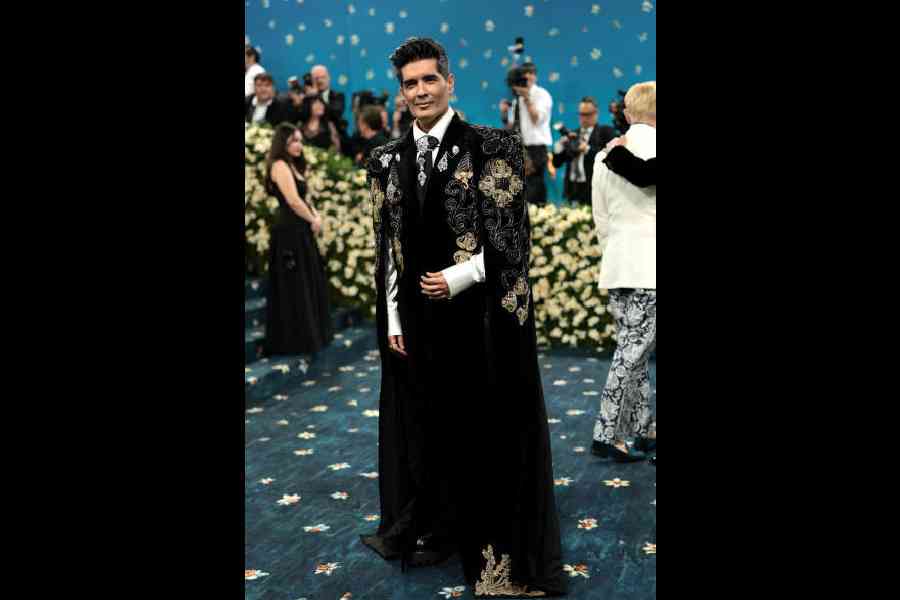
Manish Malhotra
In Paris, Cardi B was busy reminding everyone that couture is meant to cause drama, not avoid it. The rapper, never one to play it safe, dropped her album teaser Am I The Drama? while draped in Rahul Mishra’s ‘Raven’s Flight’ — a 3D embroidered sculpture masquerading as a gown from his Spring 2025 couture collection. She also took over Paris Couture Week in Mishra’s ‘Wild Rose’ ensemble. Pictures and clips of her with the designer went viral online.
For Mishra, who called the collaboration “surreal and heartfelt”, it was a moment of poetic fashion-meets-pop-culture fusion. For the rest of us? Just another reminder that while the West might be borrowing from India’s design vocabulary, Indian designers are no longer whispering from the sidelines — they’re front and centre, rhinestones and all.
And, Shakira twirling in Anamika Khanna on her world tour! It wasn’t just a fashion moment — it was a cultural mic-drop. In fiery reds, layered skirts, and crystal detailing crafted over 120 hours, Anamika brought Indian couture to a global stage with unapologetic flair. Talking about her first collaboration with a pop icon for a world tour, Anamika Khanna told t2oS, “I just have one word: Insane! When you go out of your comfort zone and push yourself, you create something that means so much to you.” The press note from her pret label AK|OK Anamika Khanna said, “This look was designed to celebrate her energy — bold yet intricate, powerful yet delicate. We wanted to bring alive the essence of movement, rhythm, and emotion that defines her performance of Ojos Así. This is also a moment for Indian craftsmanship to shine on a truly global stage, and I couldn’t be prouder.”
Rihanna, who has started a wave of maternity wear with her third pregnancy, was spotted a week back wearing a white gown from Gaurav Gupta Pre Fall 2025 evening wear collection. Halle Berry at the Chopard Universe Dinner (Cannes Film Festival) sported a dark maroon sculptural silhouette by GG too!
Even Brad Pitt’s getting in on it. The actor recently wore a Tangaliya-woven shirt by Indian label 11.11/Eleven Eleven. Tangaliya, for the record, is a weaving technique from Gujarat that uses dot motifs formed by twisting extra weft — a craft once on the brink of fading away. Brad wore it like it was the new linen. And just like that, a thousand Instagram bios changed to “handloom maximalist”.
GLOBAL BRANDS BORROWING FROM INDIA, WITH OR WITHOUT CREDIT
Prada’s Kolhapuri Slip-Up
Let’s rewind to the moment when Prada, that revered temple of minimalism, walked itself straight into a maximalist mess. During Milan Fashion Week, their Spring/Summer 2026 menswear collection featured a familiar silhouette: open-toe, T-strap leather sandals that bore an uncanny resemblance to Kolhapuri chappals — a style as recognisably Indian as monsoon humidity and autorickshaw horns.
Except, nowhere in their glossy press notes or the reverent show blurbs was there a whisper of India. Not Kolhapur, not Maharashtra, not even a vague “inspired by the East”. Just silence — until the Internet (and India) collectively screamed. Cue: Cultural appropriation row, artisan protests, and a delegation of very unimpressed Kolhapuri craftspeople marching up to Maharashtra’s chief minister.
As memes flew and price comparisons were drawn — ₹1 lakh vs ₹250 at Gariahat — Prada quickly realised that this wasn’t going to be one of those controversies that gets lost in the algorithm. In an almost unprecedented move, Prada issued a formal apology. Officials from the brand visited leather workshops and mills in Maharashtra, in what one might generously call a post-facto study tour. Following this, Lorenzo Bertelli, Prada’s head of corporate social responsibility, issued a letter crediting Indian artisans for the design, acknowledging its centuries-old heritage and GI tag, and clarifying that nothing had yet gone into production.
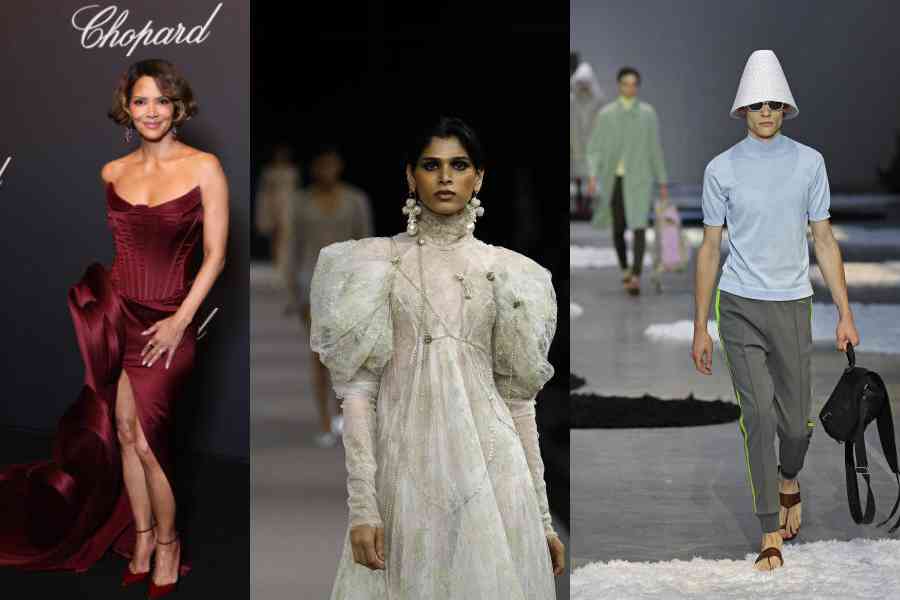
Halle Berry, Vivienne Westwood, Prada at Milan Fashion Week
“We are committed to responsible design practices, fostering cultural engagement, and opening a dialogue with local Indian artisan communities”, the statement read — a sentiment that landed a little better after a plane ticket to Kolhapur was booked. Last heard, the brand is working on heels inspired our very own juttis.
Louis Vuitton’s Love Letter to India
Somewhere between a Kolhapuri chappal and a Prada slip-on lies the fashion multiverse we currently inhabit. And Pharrell Williams rewrote the manual on how to respectfully take from a culture without reducing it to a henna-filtered Pinterest board.
At the Louis Vuitton Spring/Summer 2026 menswear show in Paris, India wasn’t just the inspo — it was the actual point. The show opened to Yaara, a track co-created by A.R. Rahman and Pharrell Williams himself, and the Centre Pompidou courtyard was transformed into a Snakes & Ladders board, because obviously, childhood nostalgia is the new luxury currency.
Designed by Indian architect Bijoy Jain, the set featured natural Indian materials like stone, lime, and wood — no plastic marigolds in sight, thank God. The trunks (yes, those sacred LV monogrammed trunks) were given a sanduk-style glow-up with embroidered palm trees and elephants, whispering sweet nothings from the Mughal miniature school of drama.
But here’s the kicker: Louis Vuitton actually credited India. Like, by name. Pharrell wasn’t just throwing in a paisley print and calling it spiritual. He did his homework — toured Delhi, Jaipur, and Mumbai; used Indian artisans; collaborated with Indian creatives; and honoured Indian silhouettes with pleated trousers, embroidered coats, and cricket-inspired knits in shades of turmeric, ivory, and palm-leaf green.
It was elegant. It was researched. It was respectful. And frankly, it made the “Scandinavian dupatta scarf” rebrand look like the cultural equivalent of drinking “chai tea” while saying “namaste” in a Lululemon kaftan.
Pharrell: 1. Performative yoga-pose merch: 0.
India Is Not “Having a Moment”. It Is the Moment
When Hermès opened its second Indian showroom at Jio World Plaza, Mumbai — a glowing temple to craftsmanship and colour — it wasn’t just about handbags that cost more than your first car. It was a sign. The French house, known for its silk métiers (which offer 75,000 shades — not even counting “bridal red”) and its impeccable leatherwork, has understood what many others are just now waking up to: India is the future fashion capital. Dior and Vivienne Westwood have already had their fashion shows in India. Numerous luxury brands have opened stores in the metropolitan cities and all of it cannot be a coincidence.
Also, this isn’t charity. With China’s luxury market experiencing turbulence (due to increasing government scrutiny, economic slowdown, and a few not-so-subtle controversies), fashion’s big players are looking for their next goldmine. Enter: India. With the world’s largest population, a booming upper middle class, rising luxury spend, and a deep cultural affinity for clothes that do the most, India isn’t a backup plan — it’s the main stage.
We’re not just consumers anymore; we’re collaborators, creators, and connoisseurs.
So What Now? The Revolution Will Be Embroidered
This moment isn’t about validation. It never was. India has always had the craft, the vision, the legacy. What’s shifting now is the lens — who gets to tell the story, and who finally gets heard when they do.
For decades, the global fashion compass has tilted West, even as the East quietly stitched the world together. But now, the narrative is changing — slowly, certainly, stitch by stitch. Indian designers aren’t waiting to be invited to the table anymore. They’re building their own — sometimes out of teak, sometimes with brocade, and often with no tablecloth at all, just truth and technique laid bare.
The world is looking, finally. But more importantly, India is looking inward too — reseeing what we’ve always had. Whether it’s the heirloom sari you almost forgot in your mother’s almirah, or the artisans of Kutch and Murshidabad who continue to weave histories with their hands — the richness was never out there, it was always within.
So, as Indian fashion walks red carpets, graces couture weeks, and slips silently into editorials and everyday wardrobes across the globe, it carries something bigger than aesthetic. It carries memory. Skill passed down, culture held close, resistance stitched into every motif.
We’re not becoming global — we’ve always been. What’s happening now is a quiet reclamation. Not loud, not loud at all. Just confident, consistent, rooted. And that, perhaps, is the most fashionable thing of all.
Welcome to the era where India is no longer the muse. We are the maker, the moment, and the movement.
And next time someone offers you a Kolhapuri chappal for ₹250, take it. You never know when it might turn up on Beyoncé.

